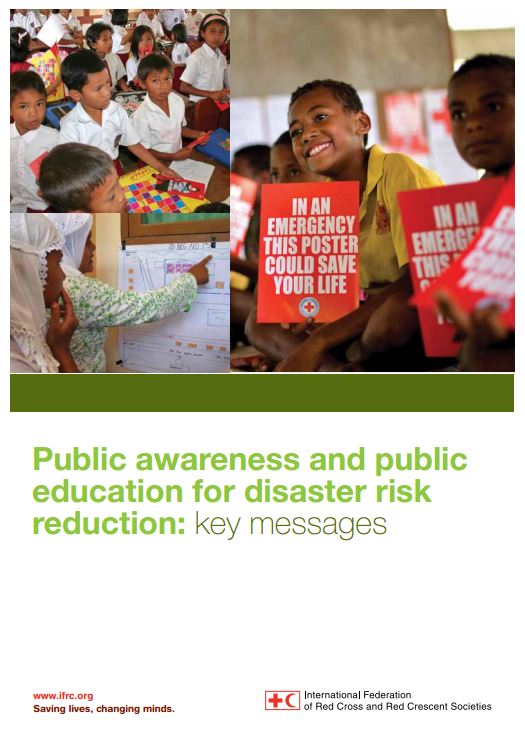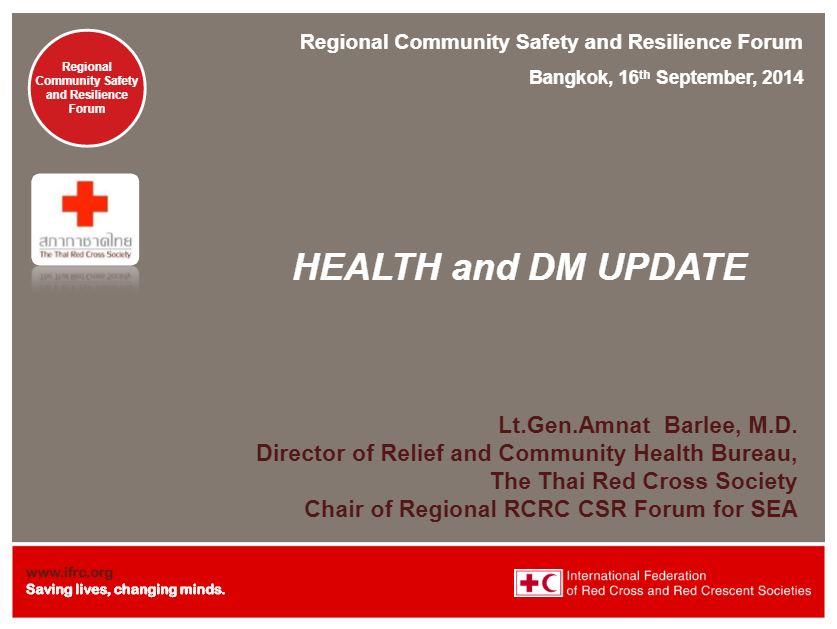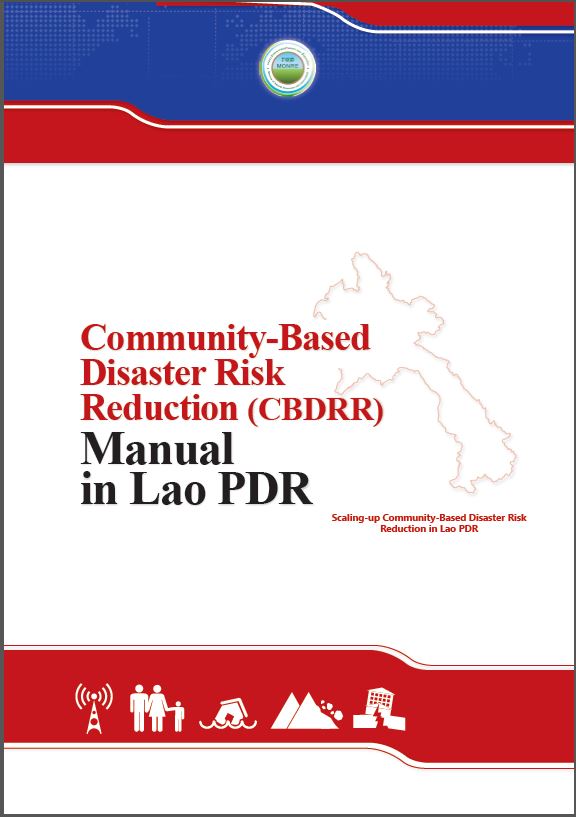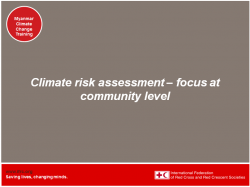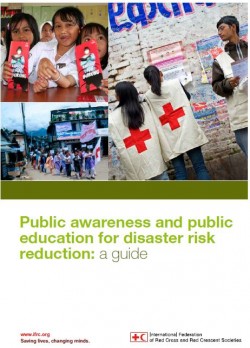CBDRR, SBDRR Refresher Training | 10-11 June 2019 | Bangkok, Thailand
During the first implementation phase of “Enhancing Disaster Risk Reduction Capacity in Thailand” supported by USAID/OFDA from July 2016 to December 2018, 11 villages and 10 schools in 3 flood-prone provinces namely Angthong, Nakornnayok and Singburi were provided with both software (e.g. training on disaster management and simulation exercise) and hardware (e.g. first aid kit and CBDRR box). Before continuing the second phase which expands the implementation to 30 other communities across Thailand, it is recommended to organize a CBDRR-SBDRR Refresher Training in order to review the key concepts and approach as well as to encourage peer-to-peer learning among Health Stations across the country.
Objectives
• To review the key concepts such as Disaster Management, Community Resilience, CBDRR approach and School Safety Framework
• To share and learn from previous implementation in different provinces
• To review the workplan of CBDRR-SBDRR in OFDA phase 2
Training Documents:
Presentations
Day 1:
- Introduction, Agenda and Objectives
- Disaster Management, Sendai Framework and Climate Change Concepts
- IFRC Framework for Community Resilience & Protection, Gender and Inclusion
- Community-Based Disaster Risk Reduction: Community Plan and 8-step CBDRR
- Comprehensive School Safety Framework
- School Safety Good Practices and Tools (Save the Children)
- Comprehensive School Safety Projects (Plan International). Click here to download supporting materials.
Day 2:
- Community-Based Disaster Risk Management
- Risk Assessment
- School-Based Disaster Risk Reduction
- SBDRR Activities by Thai Red Cross Health Station 7
References
IFRC Framework for Community Resilience (2014)
IFRC Roadmap to Community Resilience (2016)
IFRC’s Minimum standards for protection, gender and inclusion (PGI) in emergencies (2018)
Glossary on Disaster Risk Management (in Thai) (UNDP and DDPM, 2014)
Comprehensive School Safety Framework (in Thai)
Event photos: Click here to view the album and here for the training report.
![]()
Community-Based Disaster Risk Reduction (CBDRR) Manual in Lao PDR
Purpose:
The CBDRR Manual is a practical ‘how-to’ guide on community-based disaster risk reduction for government and non-government agencies in Lao PDR. It is a commonly agreed document to be referred to by agencies working on CBDRR in Lao PDR. It provides guidance and support for systematic implementation of CBDRR programs by explaining each of the steps as well as tools used.
The manual will also support the Government of Lao PDR (GoL) to monitor CBDRR activities, oversee progress of activities implemented by different actors and locations, provide necessary support on CBDRR technical knowledge as well as provide a reference point for replication of initiatives for local government and implementing agencies.
The manual was developed through a series of consultations with key stakeholders working on CBDRR in the country both from government and non-government agencies. Therefore, the CBDRR manual is based on
common activities implemented by different stakeholders in Lao PDR incorporating country regulations, government perspective and concerns.
Overview:
The CBDRR manual consists of:
Part I is an introductory part which gives background information about CBDRR in Lao PDR (including the importance of CBDRR in Lao PDR, the stakeholders of CBDRR in the country, as well as an overview about
the challenges and opportunities when implementing CBDRR in Lao PDR).
Part II contains the instructions on how to conduct the eight step process agreed upon by government and non government agencies working on CBDRR in Lao PDR. The 8 steps involved are:
Step 1: Pilot site selection
Step 2: Baseline study
Step 3: Capacity building for CBDRR facilitators
Step 4: Capacity building for VDPCC
Step 5: Community disaster risk assessment
Step 6: Participatory disaster risk management planning
Step 7: Community managed-implementation
Step 8: Participatory monitoring and evaluation
Usage: Guideline for implementation and monitoring
Target audience: National Society staff and volunteers
![]()
Assessing Climate Risks at Community Level
Purpose:
Overview:
Usage: Monitoring and evaluation
Audience: Technical staff
![]()
Public Awareness and Public Education for Disaster Risk Reduction: A Guide
Purpose
This guide is designed to help National Societies to plan and develop public awareness and public education efforts for disaster risk reduction. The guide sets out approaches and tools for public awareness and public education in disaster risk reduction already widely in use by National Societies. It pulls together a range of research on risk communications and public education for behaviour change, and practitioners’ own discoveries in applying these.
Overview
- Key public awareness and public education campaigns approaches are: participatory learning; informal education; and formal school-based interventions. There are three types of tools that can be used to implement these approaches: one-way broadcast (from one single source to a wide audience); two-way face-to-face interactions; and ‘many-to-many’ interactions (as in social networking using telephone and web tools). Evidence shows that using a combination of these types of contact is the best way to support the process of behaviour change.
- The underlying principles on which the strategic framework and the approaches rest are: legitimacy and credibility, consistency, scalability and sustainability. Strategies and ideas under consideration can be measured against these principles during the planning process.
- Four key ingredients for raising awareness effectively are: a well-crafted message; powerful imagery; an engaging and compelling tone; and adapted, localised content.
Usage: Guidance for project implementation; Monitoring and evaluation
Audiences: Technical staff; Communication staff
See also: Public Awareness and Public Education for Disaster Risk Reduction: Key Messages
![]()


